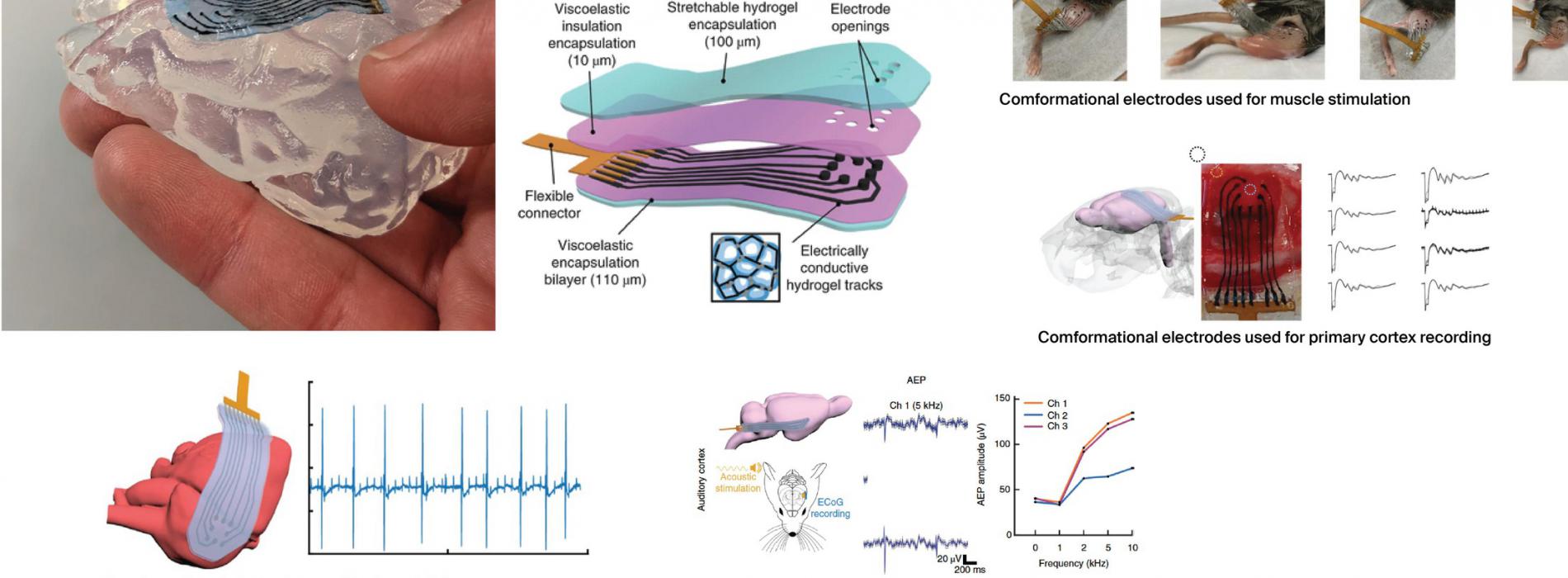
 News
News
Viscoelastic electrodes for heart and brain stimulation and recording
Scientists from the Laboratory for Soft Bioelectronic Interfaces demonstrate a new generation of flexible, viscoelastic, comformable electrodes that can be put at the surface of muscles, the heart and the brain, for stimulation and recording. These electrodes, made of graphene flakes and carbon nanotubes, are embeded in an ultraflexible alginate hydrogel, and can thus comform to complex shapes with reduced damage to surrounding tissues and better signal quality. The study was conducted with colleagues from the Wyss Institute for Biologically Inspired Engineering, the Harvard-MIT division in Health Science and Technology, Harvard University, the University of Manchester, and the Institute for Bioengineering of Catalonia.
Whenever electrical signals have to be delivered to, or recorded from body parts, such as in cardiac arrhythmias, epilepsy... stiff metallic electrodes and encasing material are used, at the surface of soft, malleable and moving tissues. This mismatch results in higher currents passed to jump the poor interface between electrodes and tissues, and mixrowounds to the tissues around the electrodes.
The team of Stéphanie Lacour, together with that of David Mooney, has developed a sandwiched electrode system made of an alginate-based flexible hydrogel, an insulation layer, and hydrogel conductive tracks based on carbon nanotubes / graphene flakes mixtures that define an electrode array. This system is so flexible that it can conform to any shape in the body, resulting in much better interfaces and thus lower current used for signals of better quality, and much reduced reaction of the body.
They have demonstrated the system for muscle stimulation, ECG recording in different configurations, and electrocorticography, both in the primary cortex and in the auditory cortex.
These new viscoelastic eletrodes pave the way for a new generation of electrodes that will interface much better with body parts, even with very complex geometries such as brain circumvolutions, induce less damage to the surrounding tissues, and require less current for better signal quality.
Funding
the Bertarelli Foundation, the Wyss Center for Bio and Neuroengineering, SNSF Sinergia grant no. CRSII5_183519
References
Tringides, C.M., Vachicouras, N., de Lázaro, I. et al. Viscoelastic surface electrode arrays to interface with viscoelastic tissues. Nat. Nanotechnol. (2021). https://doi.org/10.1038/s41565-021-00926-z